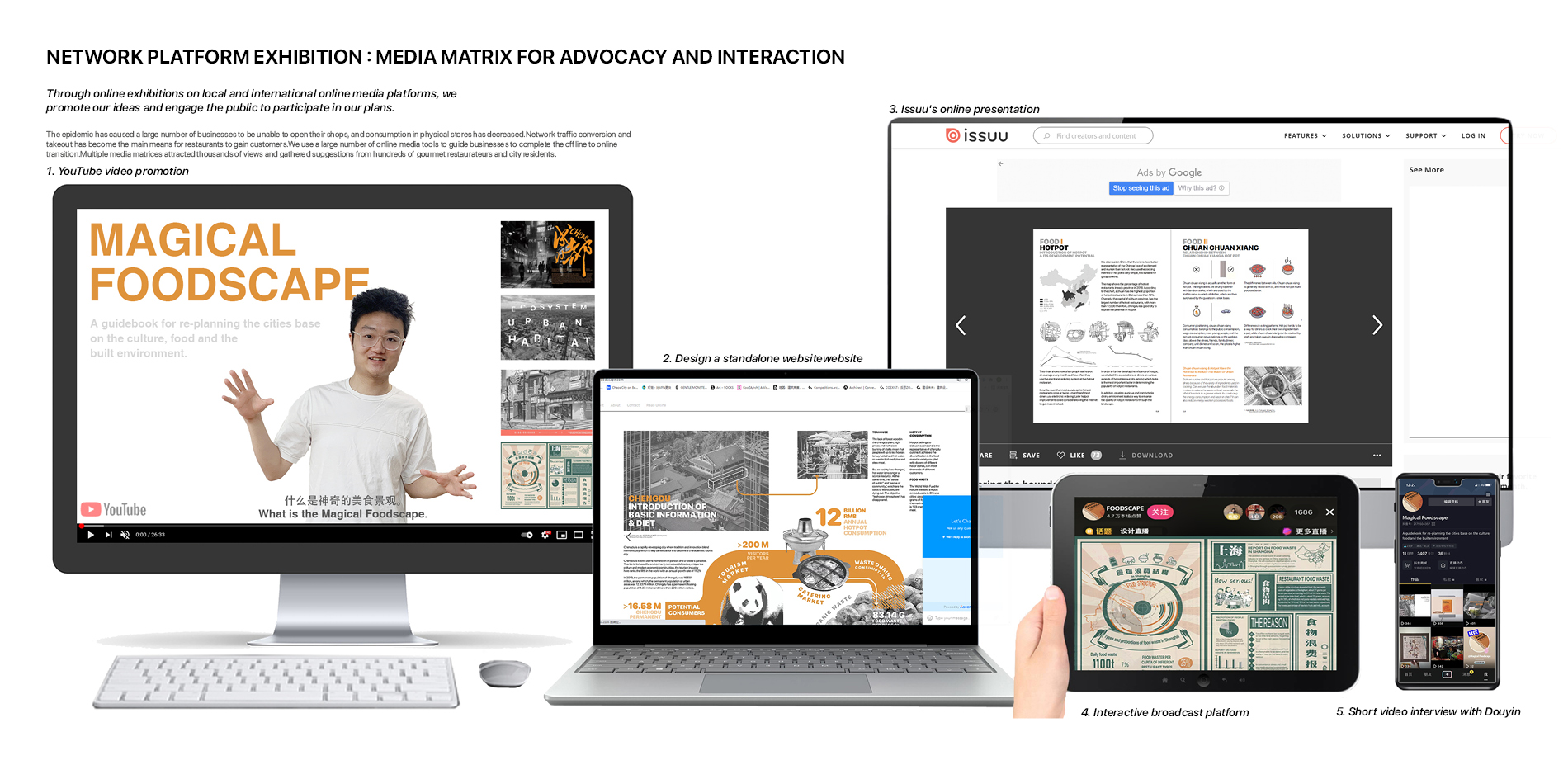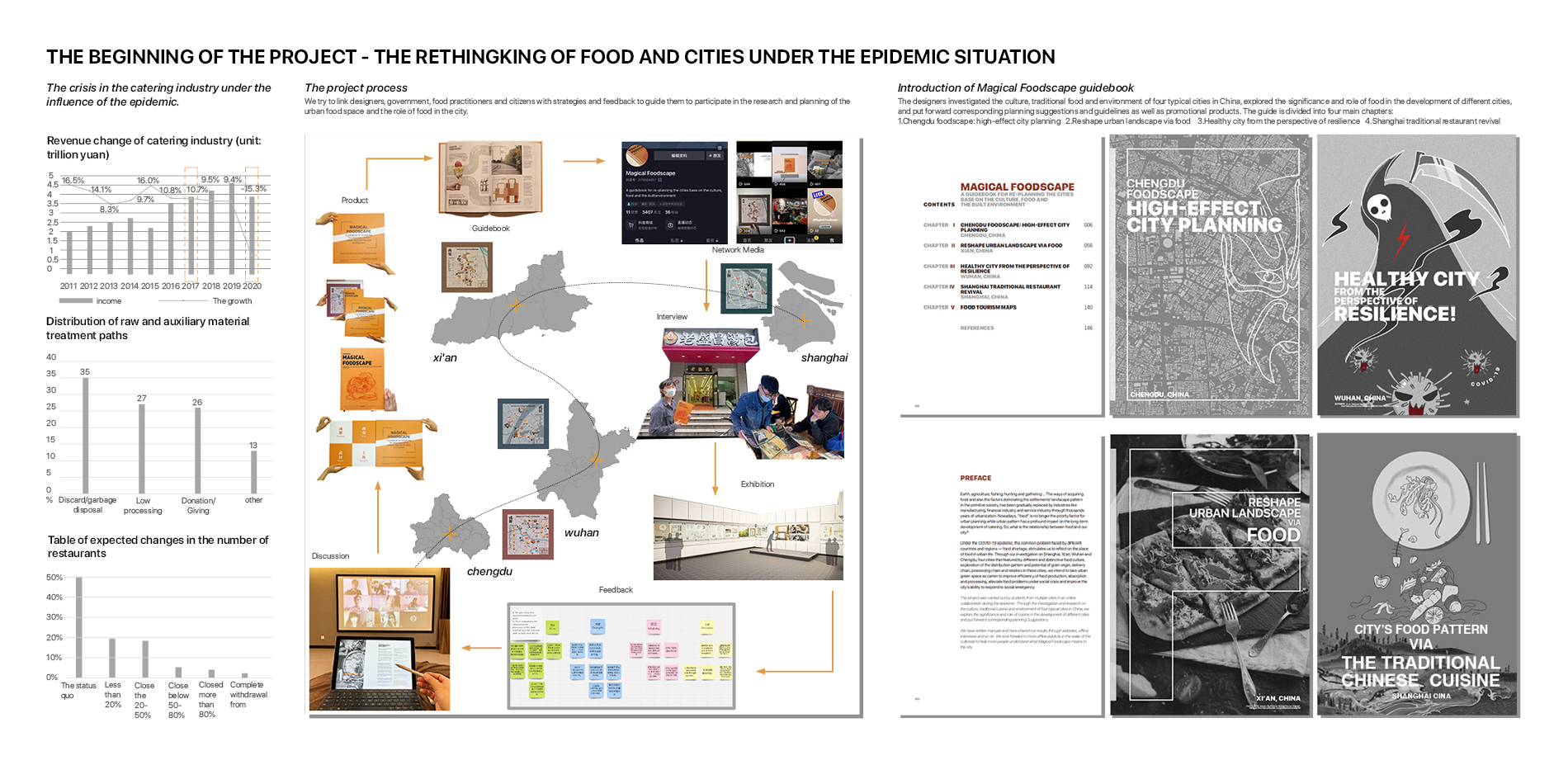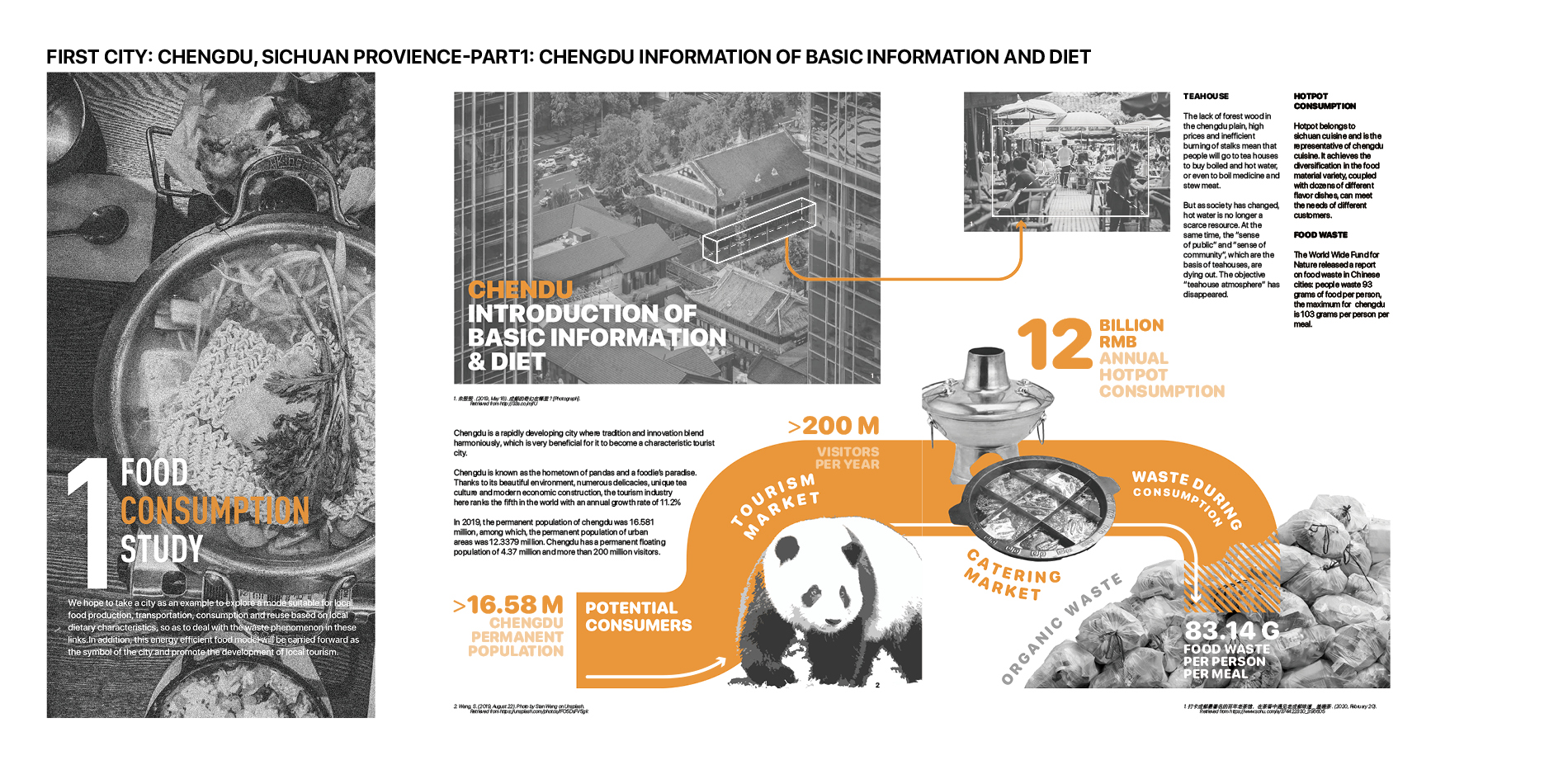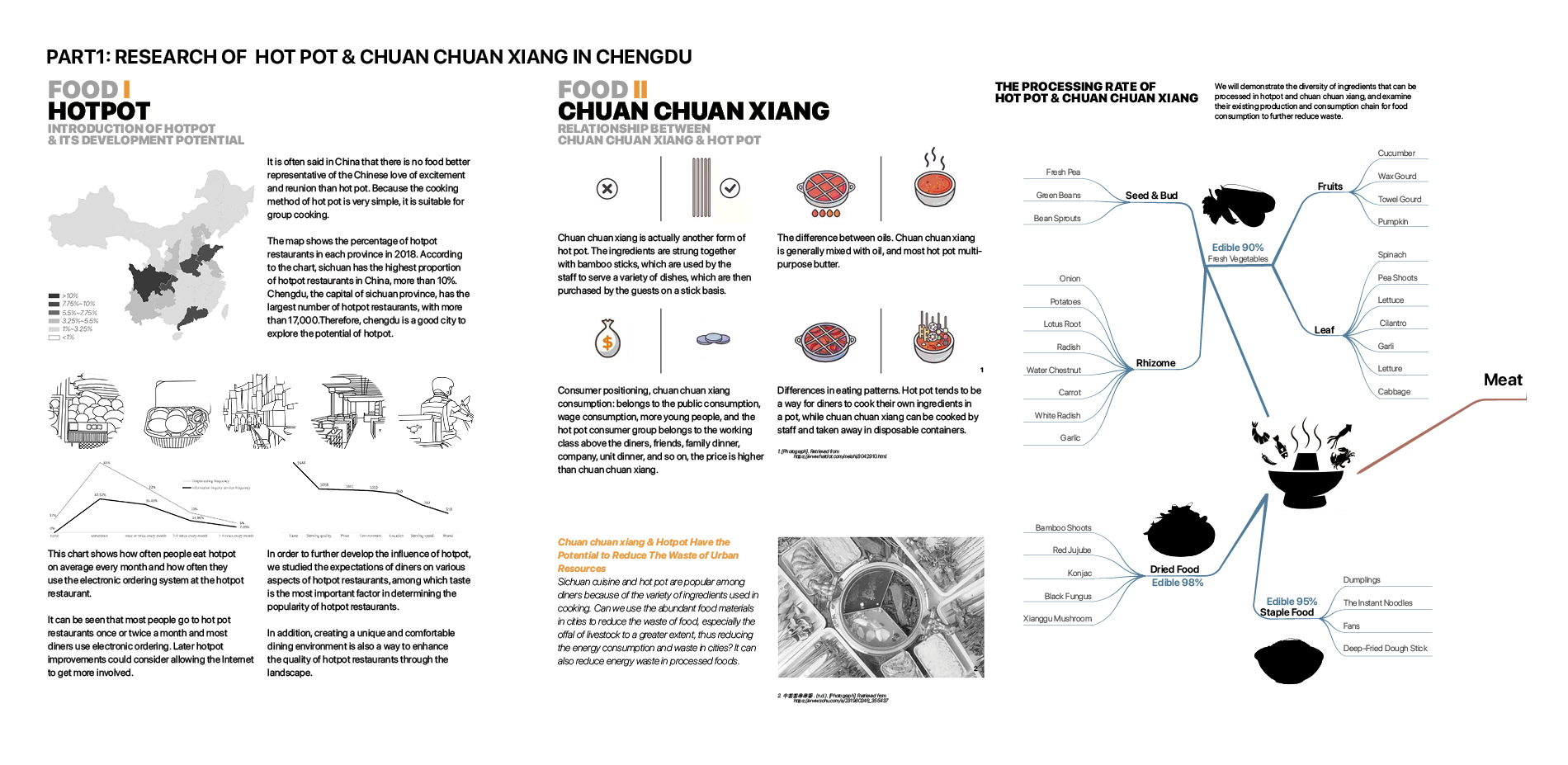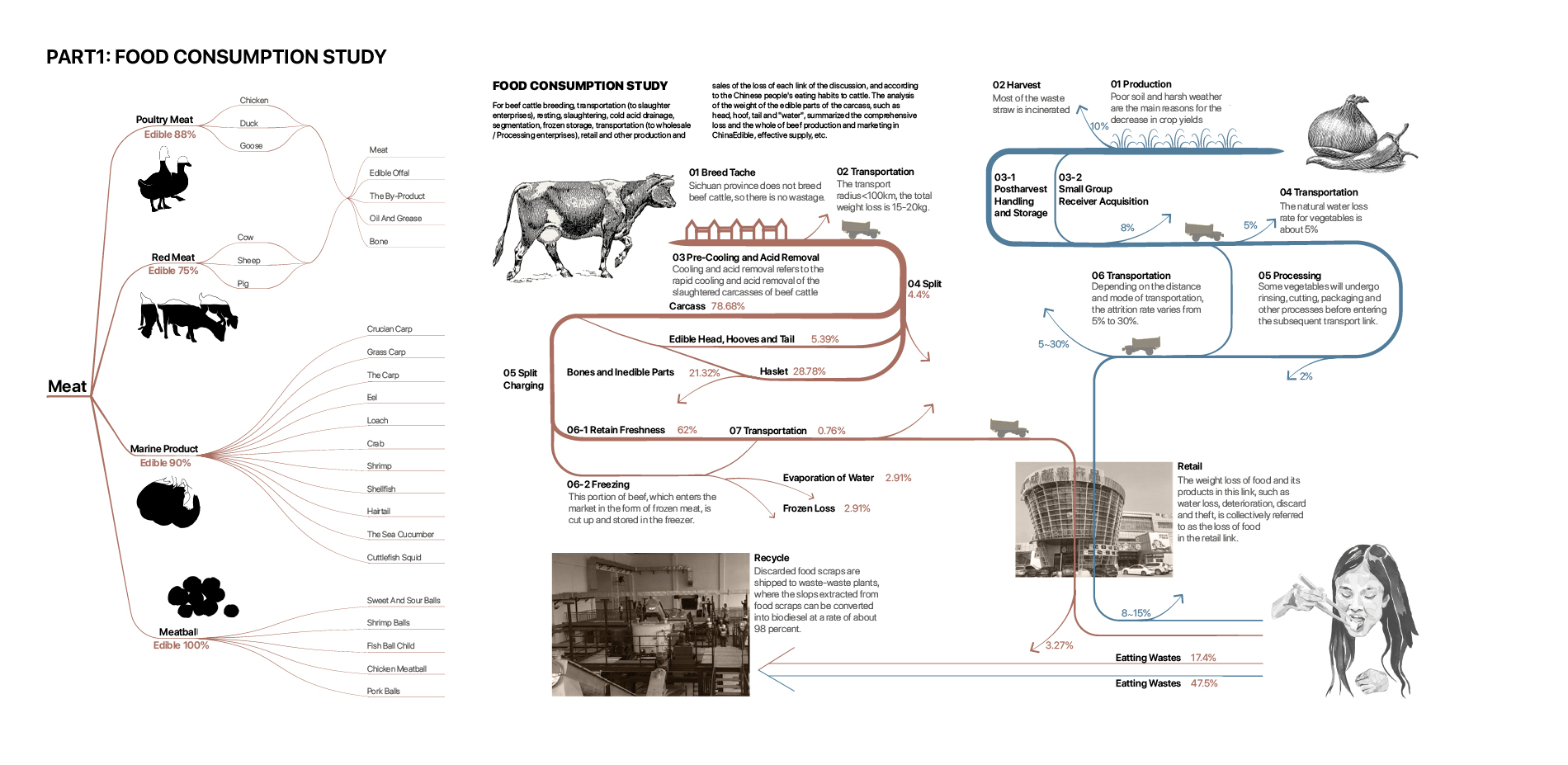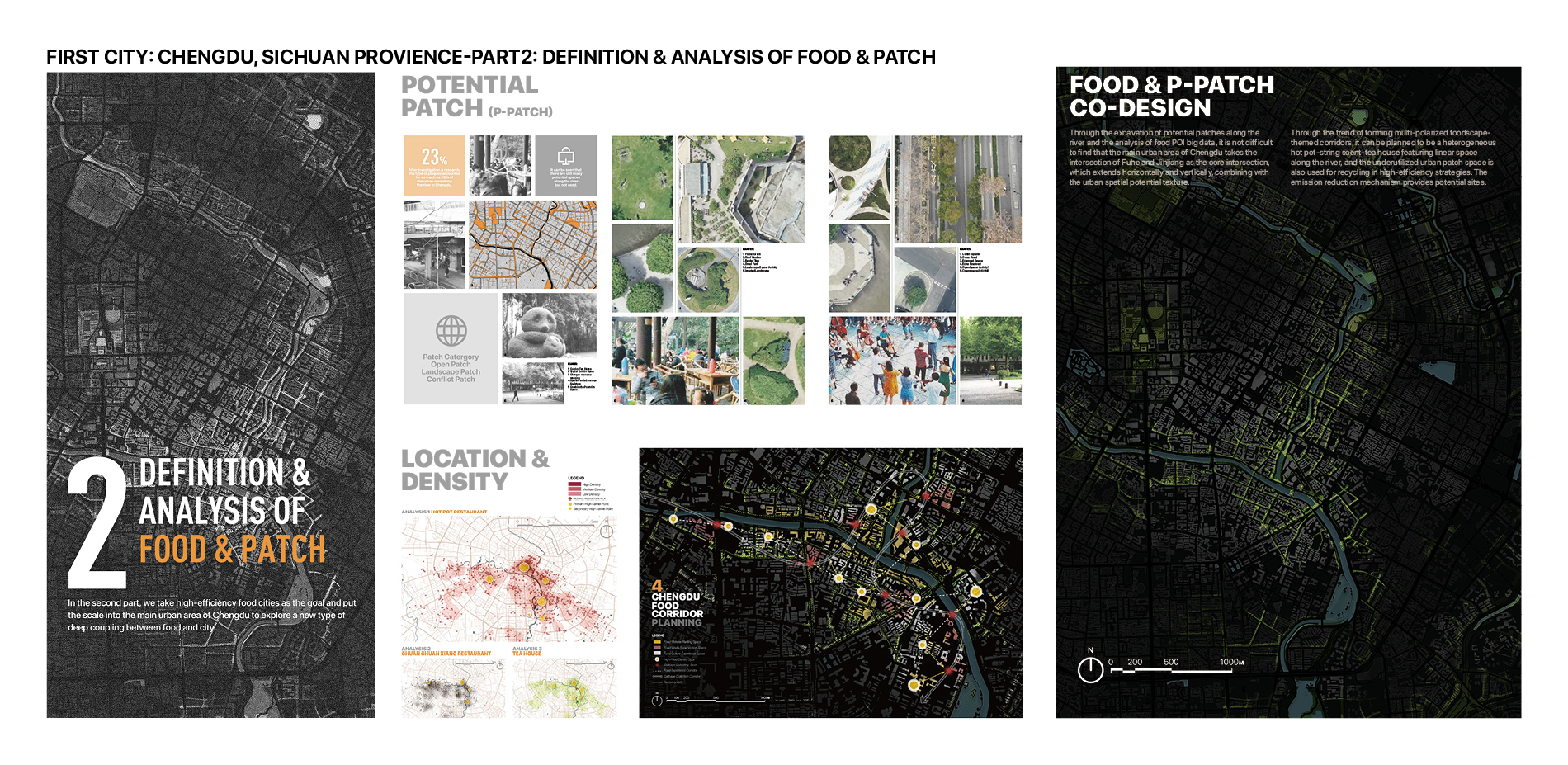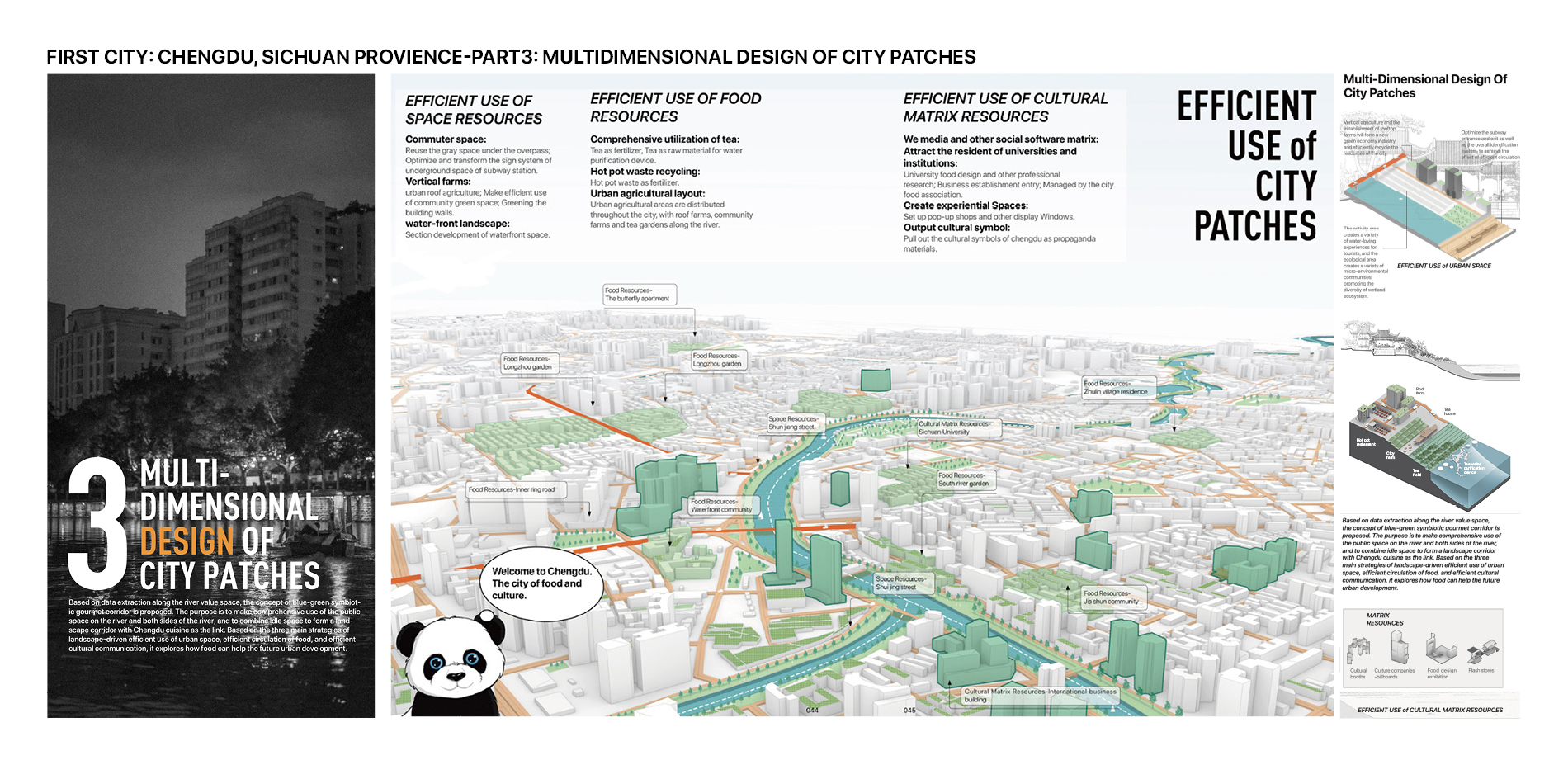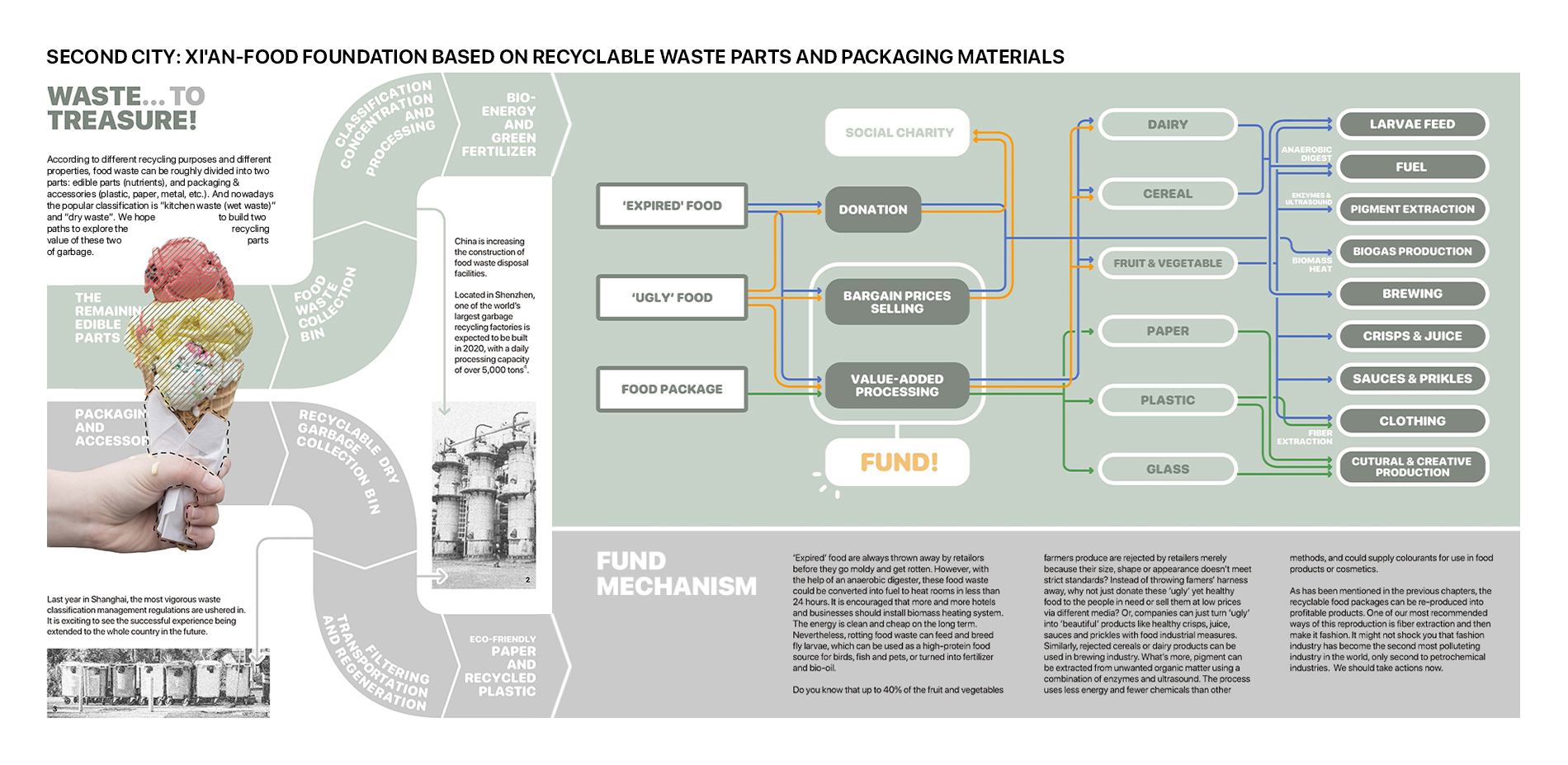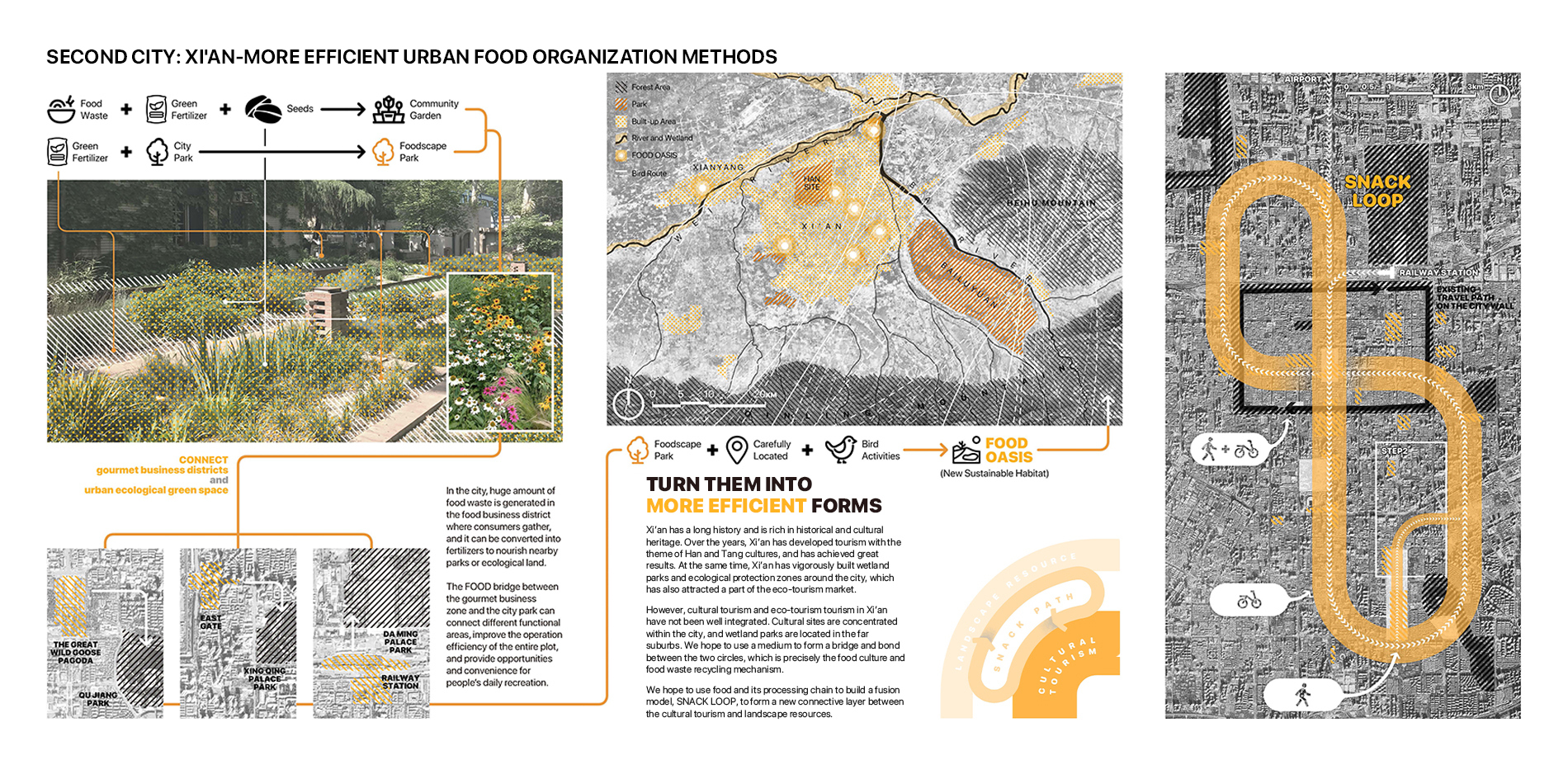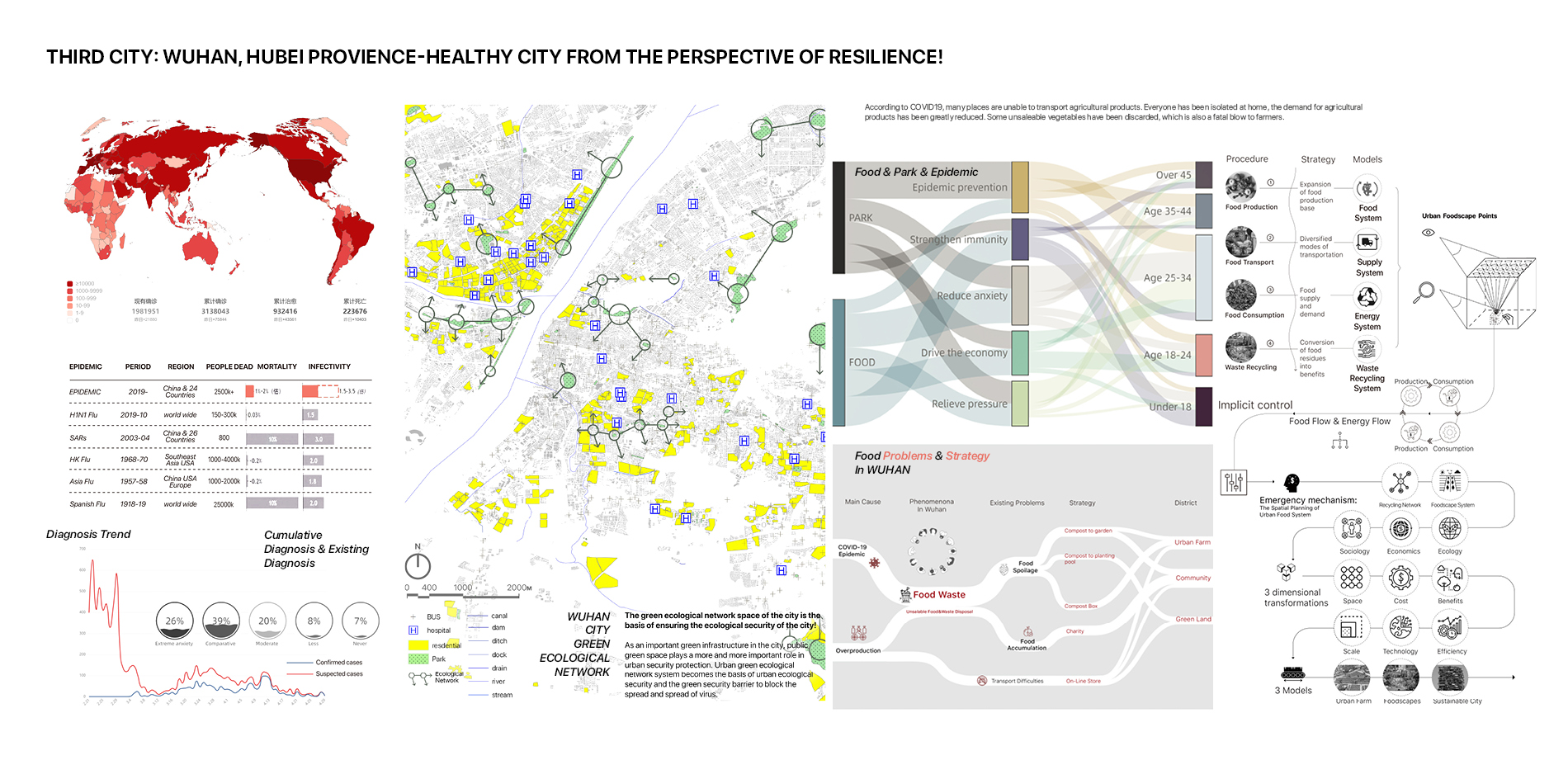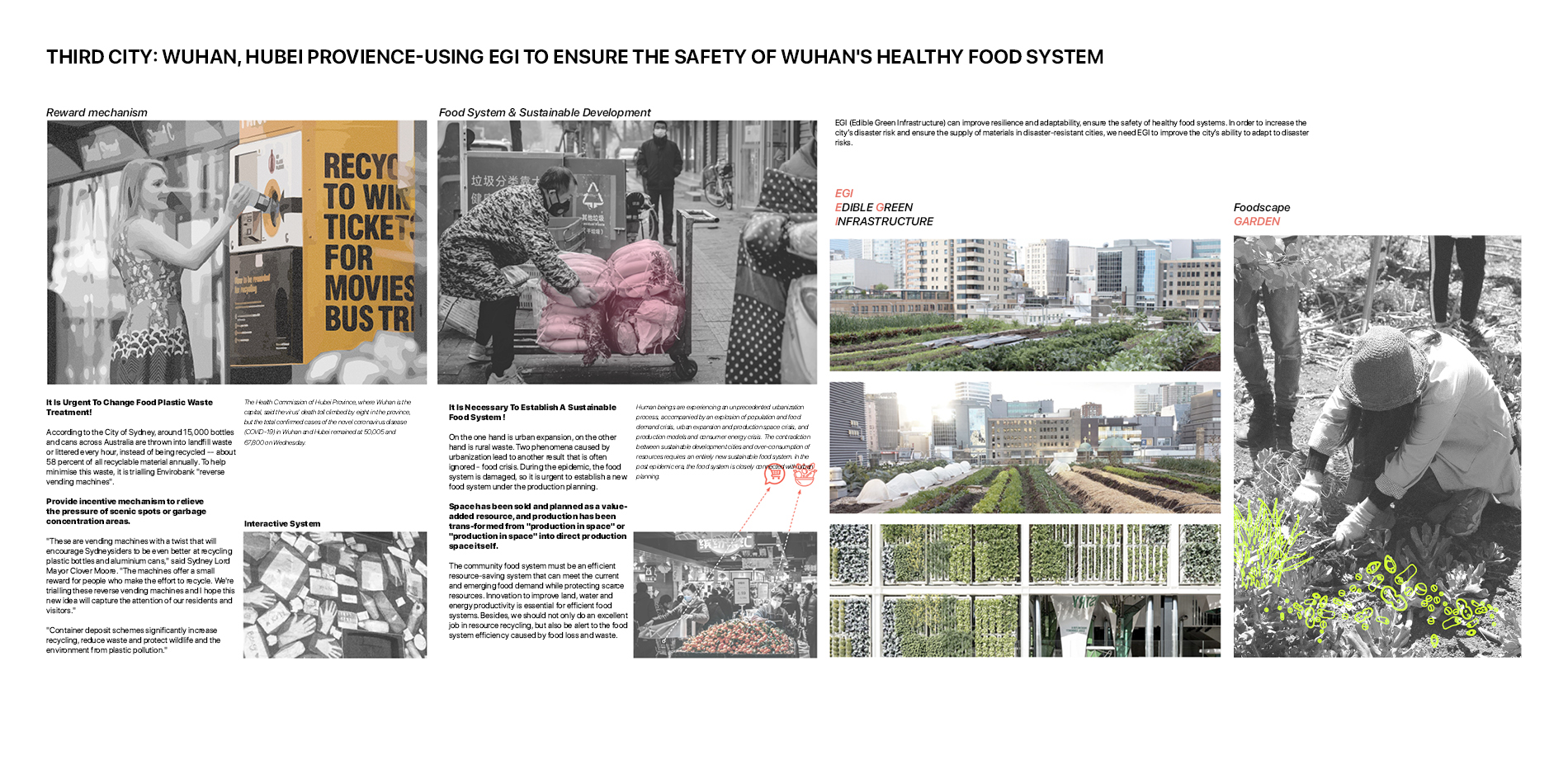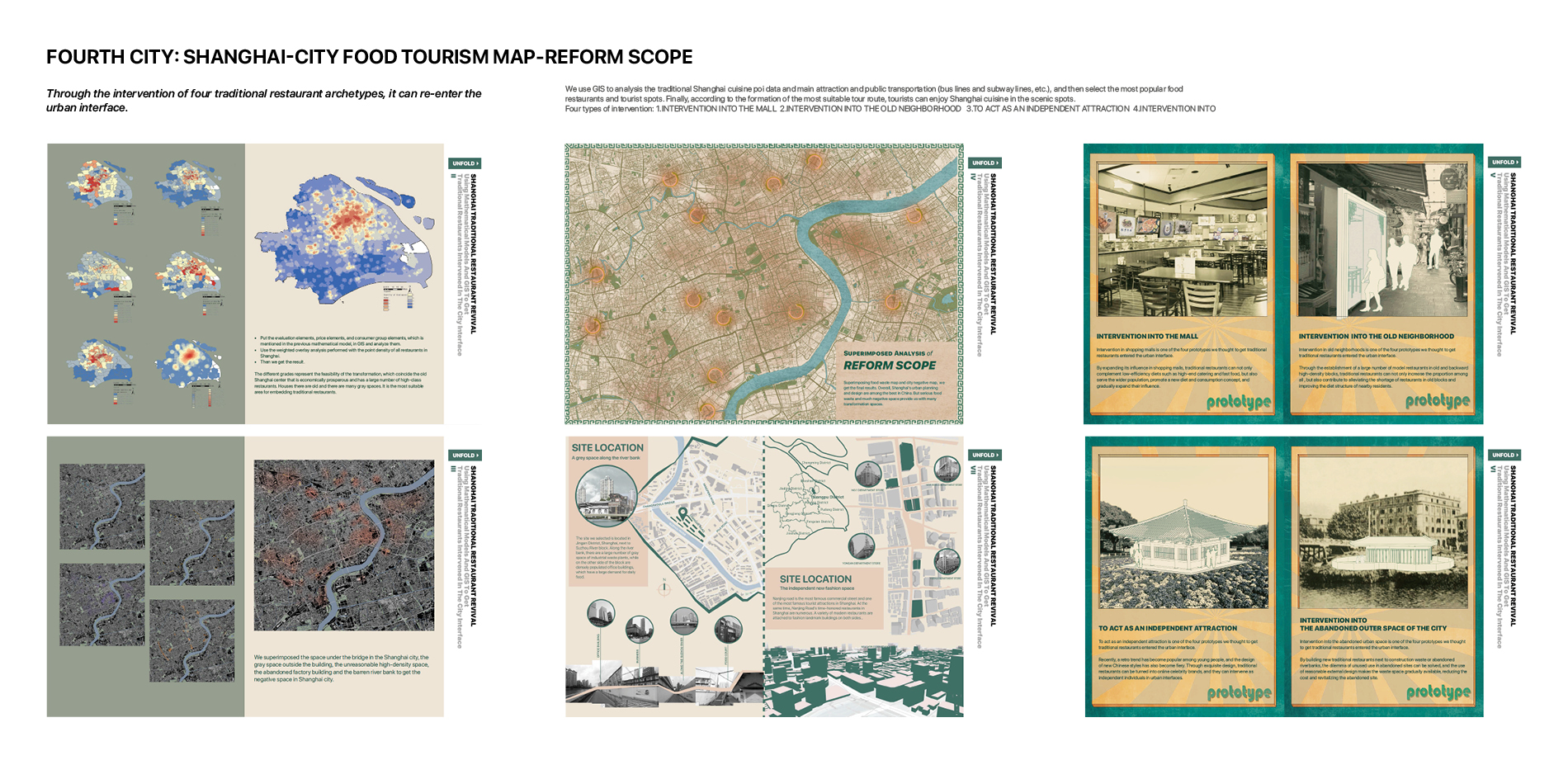Magical Foodscape: A Guidebook for Re-planning the Cities Based on the Culture, Food and the Built Environment
Honor Award
Student Collaboration
Chengdu, Xi'an, Wuhan, and Shanghai, China
Mingze Chen, Student International ASLA; Yuxuan Cai; Zheng Yin, Student Affiliate ASLA; Siyi Chen; Yuxi Wang; Yiling Zhang; Junwen Zheng; Lan Yao; Zhi Wang, Student International ASLA; Yue Zhang, Student ASLA; Rui Wang; Shengqian Wang; Muyun Zhu; Jing Pang; Lingzhi Liu
Faculty Advisors: Xiwei Shen, ASLA
Shanghai Jiao Tong University
In addition to being a collaboration, Magical Foodscape is also a communications project, because they really thought about how they were explaining their topics graphically and cross-culturally. The book is very well written; the students included a lot of public participation. It is an excellent example of pushing landscape architects into fields that aren't seen as traditional, showing our systems-thinking and the way we can lead teams.
- 2021 Awards Jury
Project Credits
Xiwei Shen
Principal of Shanghai Maixi Planning Consulting Co.,Ltd & Teaching Fellow at Shanghai Jiaotong University (20-21')
Yang Zhang
Instructor of Landscape Architecture, Shanghai Jiaotong University
Yun Wang
Director at Landscape Architecture, Shanghai Jiaotong University
Project Statement
Magical Foodscape will prioritize food and catering as a factor in urban planning for effective food distribution, thereby increasing the risk resilience of the food supply and catering sector in the face of disasters.
The project is sponsored by Shanghai Maixi Consulting & Planning Co.,and the Department of Landscape Architecture at Shanghai Jiaotong University. The project was led by Xiwei Shen, Teaching Fellow at Shanghai Jiaotong University (20-21'),and collaborated by 15 students during a summer workshop in 2020. A comprehensive media matrix was built to share our planning recommendations through online and field research on culture, traditional dining and environment in four typical Chinese cities. The public was guided to participate in the campaign from various platforms and feedback was collected to continuously optimize the planning strategy.
Project Narrative
Purpose
Earth, agriculture, fishing, hunting and gathering—— the ways of acquiring food and also the factors dominating the settlements’ landscape pattern in the primitive society, has been gradually replaced by manufacturing, financial industry and service industry through thousands of years of urbanization. Nowadays, ‘food’ is no longer the overriding factor for urban planning while urban pattern still has its profound leverage on the long-term development of catering.
Under the COVID-19 epidemic, the common problem faced by different countries and regions —— food shortage, inspired us to reflect on the place of food in urban life. Through our investigation on Chengdu, Xi’an, Wuhan and Shanghai, the four cities that featured by different and distinctive food culture and exploration of the distribution pattern and potential of grain origin, delivery chain, processing chain and retailers in these cities, we intend to take urban green space as carrier to improve efficiency of food production, absorption and processing, drive the efficient use of urban space base on landscape, promote efficient circulation of food and efficient spread of culture, alleviate food problems under social crisis and improve the city’s ability to respond to social emergency via ‘foodscape’.
Audience
This handbook will be available to a wide audience, including residents, tourists, government planner, professionals, and even restaurant owners, farmers and cooks. For residents and tourists, this guidebook guides provides them with convenience while guides them to pay more attention to the role of food in the city. For farmers and restaurant owners, ’Gourmet map’ provides new ideas for their restaurant site selection. For the government and professionals, many feasible strategies and methods can also help with policy formulation.
Message
This guidebook proposes different planning guidelines based on the culture, food, and environment of the 4 cities, and is written in the order of the cities.
Chengdu
We aimed to utilize patches in the terraces along the rivers in Chengdu and optimize the production -processing- supply chain of Chengdu’s traditional cuisine, thus to maximize profit.
Hot pots, skewers, teahouses— 3 of the most characteristic Chengdu cuisines faces serious waste problem during production, transportation, and consumption. Among them, as for hot pot, we proposed the concept of ’urban farm’ since traditional cooking methods provide conditions for the reuse of hot pot food waste; as for tea, we proposed to use waste tea as raw materials for water purification devices and tea field fertilizers. By extracting POI points, we found that the three types of restaurants with large passenger flow in Chengdu were mostly distributed along the terraces of the rivers. We combined the patches along the rivers with food production and food processing to improve the development of the high-efficiency cities.
Xi’an
We aimed to solve the problem of food waste and use the resulting landscape as a medium to activate local culture.
Xi'an has a long history, and the city canter is rich in historical and cultural heritage. In recent years, many wetland parks and ecological protection areas around the city have been constructed. However, there are differences between the development of the cultural tourism and the eco-tourism in Xi'an due to the geographical location.
We propose to establish the concept of ‘food funding’ and encourage ‘new means’ to turn the ecological problems caused by food waste or food packaging into opportunities to solve the existing ecological problems, build community gardens, and support the management of stray animals. At the same time, the resulting landscape activates the hidden special cuisine in Xi'an city and forms a food loop to meet the needs of tourists and residents for entertainment. On the city scale, the "food loop" connects the cultural tourism within the city with the ecological tourism around the city as to promote urban development and optimize the ‘green pattern’
Wuhan
We aimed to optimize the urban green space grid system via food and establish a more complete emergency disaster prevention mechanism at the same time.
Evenly arranging the park green space helped to shorten the distance for people to move so to reduce the spread of the COVID-19 epidemic in the early stage of the virus outbreak. Food production space and green space have similar functions in epidemic prevention and control. We took Wuhan, China's earliest outbreak of COVID-19 as the research object and established a scientific emergency mechanism through geospatial data analysis. At the same time, we proposed the use of food packaging to create cultural and creative products, etc., to ease the pressure of the outbreak on the urban economy
Shanghai
We aimed to take the advantage of the processing methods and marketing models of Shanghai's traditional gastronomy to revive the Chinese restaurants by re-planning the city's food pattern via the traditional Chinese cuisine.
We took catering efficacy, consumer efficacy and restaurant efficacy as the research objects respectively and obtained the conclusion that the traditional Chinese restaurant could bring the greatest benefits by mathematical modelling method. At the same time, we combined the data model with GIS analysis to analyse the ‘3 major efficiencies’ in different areas of the city and determined the scope of renovation with consideration of urban grey space. We explored the specific means of combining a variety of urban interfaces with traditional cuisine according to the specific spatial relationship and different types of traditional Chinese cuisine.
Impact
The food and restaurant industry links the production and consumption chains of the city and is closely related to its development. This project introduces food as a necessary element of urban planning by means of landscape. We studied and analysed in detail the problems and potential of urban food production and consumption in four Chinese cities, using food as a medium to solve urban problems and optimize spatial structure through food issues. In the process of developing this handbook, we have created "food maps" for different cities to guide the public to join the campaign and promote the positive development of cities through changes in their daily eating habits; we also hope that professional planners can rethink the role of food in guiding urban planning and promote the organic integration of city and food in different cities and revive the food industry. We also hope that professional planners can rethink the role of food as a guide for urban planning, promote the organic combination of city and food in different cities, and revitalize the restaurant industry in cities hit by the epidemic, with positive effects on urban production and consumption.
Distribution Methods
1. A relevant Website (https://www.magicalfoodscape.com/), the digital version books were already published online.
2. The food map has been posted in the important scenic spots of the four cities.
3. Hard copy of the Magical Foodscape Guidebook.
4. Videos and live streams were posted on live platforms such as shake, you tube, etc. to guide the public to participate in collecting information back.
Youtube: https://youtu.be/Ixgimvz0yfI
Bilibili: https://www.bilibili.com/video/BV1K54y1V7aS/
5. Issuu publish: https://issuu.com/magicalfoodscape/docs/107.
6. We are building an offline exhibition for four cities.
Team Composition
The team is led by Mingze Chen and composed of 15 graduate students from China, USA, UK, Italy, Australia, and other countries, including 9 students from landscape architecture, 3 from urban design, 1 from urban planning, 1 from architecture and 1 from human geography, with rich and diverse backgrounds.
